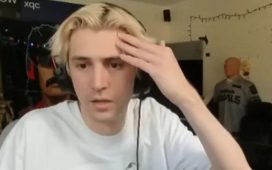t’s Termina’s terrifying moon that everyone remembers. Its grimacing, red-eyed stare looms large in the memory, summoning anxious recollections of hours spent watching its terrifying visage inch ever closer to the earth, of time slipping away.
Majora’s Mask recently celebrated its 20th anniversary. Sequel to the groundbreaking The Legend of Zelda: Ocarina of Time, it was released in April 2000, only 16 months after Ocarina’s initial release. Much has been written about the motivations behind the game’s unusually speedy development, not all of it in agreement, but an interesting consequence of this abbreviated production is that instead of producing new 3D models for the game, the developers reused the game engine and graphics from Ocarina. This gives Majora’s Mask an uncanny mirror-world quality that enhances its themes of isolation, identity and transformation.

After saving Hyrule from Ganon’s destruction, Link, the hero of time, has crept away in search of the fairy Navi. Having lost his way in a forest, he is transported to an alternate version of Hyrule called Termina by the impish, sinister Skull Kid, a lost child-spirit who has stolen the powerful Majora’s Mask. The mask’s evil magic has set the moon on a collision course with the earth, and Link has three days to avert certain disaster – three days that he must relive over and over, using his ocarina to slow, speed, reverse and invert time.
Ours was a Zelda household. Having played through Ocarina of Time with my brother and sister, my memories of the game are bright-edged and clear: that first breathless emergence into Hyrule Field as the music started up; the devastation of the ruins of Castle Town; fighting the spider boss Queen Gohma, which we found so terrifying that we had to call my mum in. But Majora’s Mask was different and bewitching. It was the first game I had ever encountered in which the world felt separate to you. It is a place in which you exist, rather than a place you create.
Characters come and go, each with their own timelines, thoughts and desires. Only by keeping careful note of their movements, learning and relearning the game, can you unearth their stories. More than anything, it was the game’s unshakeable melancholy, its pervasive strangeness, that appealed to me. Majora’s Mask is about revisiting familiar environments, peopled with characters players recognise from Ocarina, but everything has the slight wrongness and strangeness of a dream.
The first song that Link learns to play on his ocarina, the Song of Healing, is a literal inversion of the jaunty Saria’s Song from Ocarina. Every time you play it, it’s an aural reminder that Link has found himself somewhere very different to Hyrule, somewhere that things aren’t quite right.
The Song of Healing is central to some of Majora’s most moving and troubling scenes. The game is full of masks that Link can wear to give himself useful powers, some of which let him physically transform into different creatures: Deku, Goron and Zora. While these new identities give Link new attacks and magical abilities, they come at a cost to their bearer. These transformative masks are acquired from three dying or dead characters. While his Song of Healing can bring these figures to rest, enveloping their spirits in the masks, wearing them seems to cause Link terrible pain. Every time he puts one on it triggers genuinely frightening scenes in which he screams out and convulses as his body shifts and alters.

It’s a chilling reminder of the cost of such transformations, a clever gameplay idea made shocking and profound. The more Link wears these masks, which often cause him to be mistaken for the dead characters he resembles, the more his former identity as the triumphant hero of time seems to dwindle away. “You’ve met with a terrible fate, haven’t you?” observes the game’s Happy Mask Salesman, confronted with a hideously transformed Link at the beginning of the game. Majora’s Mask leaves you wondering whether this fate can ever be truly reversed, and what will be left of Link when the adventuring is done.
I remember with peculiar clarity Majora’s oppressive, claustrophobic atmosphere, the creeping anxiety that lay beneath even its lighter moments. Returning to the game, these things are still as present as they are in my memory, though the world feels a little smaller now I’m an adult.
Progress is slow, because resetting the clock causes nearly everything to reset with it, undoing large swathes of perceptible progress. The little old lady from the bomb shop is robbed again and again; Goron Village is once more blanketed under snow. But playing the game as an adult, I realised what I hadn’t seen as a child. Even as you rewind time again and again, finding yourself back at the dawn of the first day with your pockets empty, you are making progress. Little by little, hour by hour, Link is restoring order to Termina, finding a new end to everyone’s stories. For all the strangeness and sorrow of Majora’s Mask, there is, in the end, the possibility of salvation.
• Now’s the time – 15 epic video games for the socially isolating














